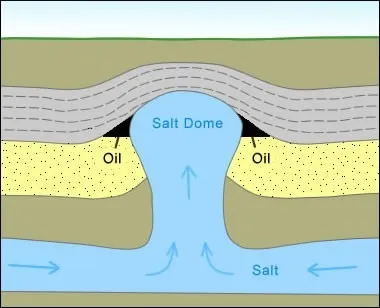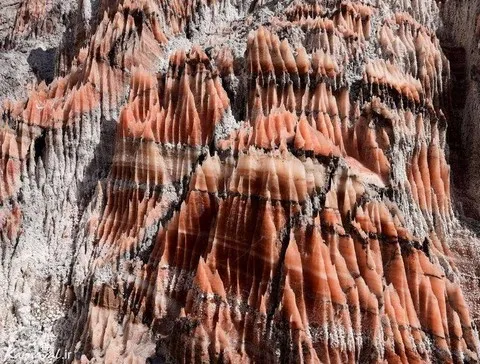What is a salt dome in geology ?
Salt dome : definition
A salt dome arises from a layer of evaporite buried at great depth. Under the weight of the rocks above them (lithostatic pressure), these less dense evaporites deform and migrate towards the surface, forming columnar or mushroom-shaped structures. This rise can be accelerated by tectonic movements : this is the phenomenon of halokinesis. The diameter of these domes generally exceeds one kilometer.
The salt domes are very important reserves of halite but also of sulfur, formed in the "cap rock" by bacterial destruction of anhydrite, and effective traps for hydrocarbons. Due to their tightness, they are also used by humans for the storage of petroderivatives and radioactive waste.


